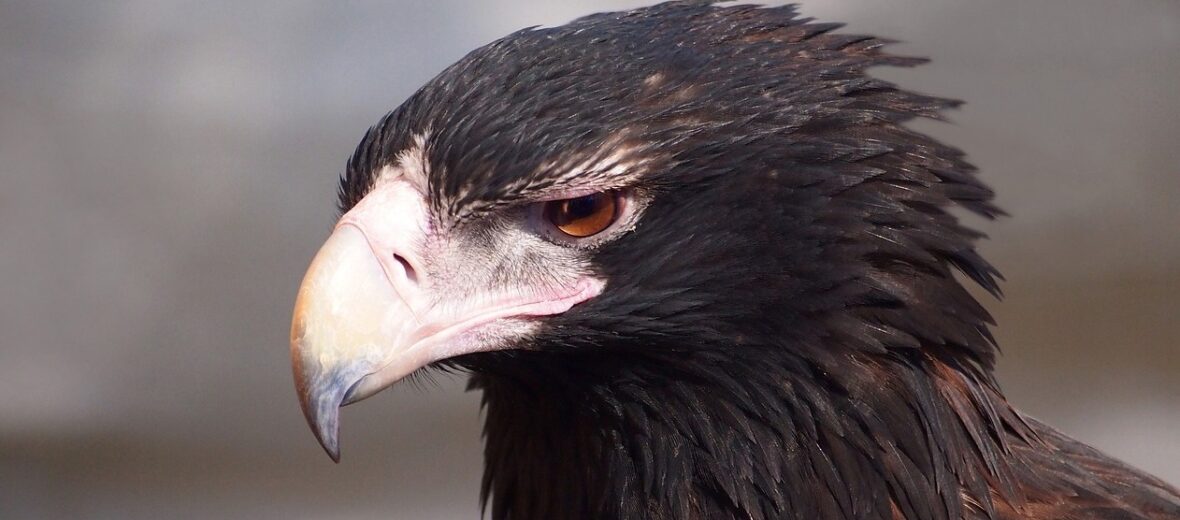
The wedge-tailed eagle or bunjil is the largest bird of prey found in Australia, and it is also found in parts of Papua New Guinea, southern New Guinea, and even Indonesia. The Wedge-tailed Eagle can be found from sea level to mountainous alpine regions. However, they prefer wooded & forested land as well as open country, typically avoiding rainforests and coastal regions. These raptors are listed as Least Concern by the IUCN.
First the Stats…
Scientific name: Aquila audax
Weight: Up to 7.6 lbs.
Length: Up to 3.9 feet
Lifespan: Up to 7.5 years
Now on to the Facts!
1.) Wedge-tails eat both live prey and carrion. Their preferred prey items are hares and rabbits. They will also take an occasional snake.
2.) It has also been documented that they will work as a collective and have been seen taking down an adult kangaroo!
3.) Wedge-tailed Eagles are monogamous (mate for life).
4.) They hunt early in the morning then spend the rest of the day they either sitting on exposed perches or circle and glide in the air.
5.) These eagles can glide at altitudes of up to 6,000 feet!
But wait, there’s more on the wedge-tailed eagle!
6.) Way back when, the wedge-tailed eagle was considered vermin or a general pest because of it had a reputation of being a killer of sheep and lambs.
7.) It is estimated that approximately 30,000 were killed due to the encouragement by officials to get rid of them due to their unfortunate labeling of being killers of farm animals.
Did you know…?
The wedge-tailed eagle is Australia’s largest bird of prey and one of the world’s largest raptors.
8.) They build nests in large eucalyptus trees, sheltered from the wind and are shy nesters; abandoning their nests if they perceive a threat.
9.) Their nests can measure 6 feet across, 9 feet deep, and weigh more than 880 lbs!
10.) The primary threats to wedge-tailed eagles are clearing of trees which causes the loss of nesting sites. Also indirect poisoning from Dingo baits, secondary poisoning (eating rabbits laced with pindone), collision with fences & overhead wires, and being hit by vehicles while eating road kill.
Now a Short Wedge-Tailed Eagle Video!
Also, check out the Critter Science YouTube channel. Videos added frequently!
Want to suggest a critter for me to write about? Let me know here.



